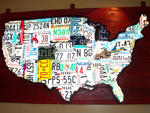 Many people who are interested in improving their memory think they have neither the time nor money to spend on doing it.
Many people who are interested in improving their memory think they have neither the time nor money to spend on doing it.
With some help from your iOS mobile device, and the free apps listed here, you can start improving your memory right away!
I can't, of course, guarantee that any or all of these app will remain free. That is up to their respective developers. However, as of the date of this post, each of these apps has remained free for at least 2 full weeks, which is much longer than the average temporary free discount.
All app links in this post (in bold) will take you directly to the corresponding app's iTunes store page. Please double check for yourself that a given app is still free at the time you download it, as I cannot accept any responsibility for charges made to your account, accidentally or otherwise.
The apps are divided into 4 categories:
• Basic Techniques
• Flashcards
• Memorize Speeches/Poems/Lyrics
• Memorize Specific Topics
Basic Techniques
Dave Farrow Memory Training - The most basic technique to learn is called linking. This app teaches it clearly, and even helps provide visual examples of the technique.NumberThink - Even when you've mastered linking, numbers can still prove a challenge. This app teaches one of the standard methods for turning numbers into easily-pictured images, which can then be used with the linking technique. Once you're comfortable with this techniques, you can also practice using it with number lists generated by the free iOS apps Build Brain Power and/or Mnemometer.
Memgellan - There's another technique that's been gaining popularity ever since the release of the book Moonwalking With Einstein. It's called the Journey Technique, since it uses steps on a familiar journey as places to keep reminders. You can group your places and photos together in journeys in this app, which really helps to make the technique work more vividly.
How to memorize a deck of cards - This app expands on the journey system with the other system mentioned in Moonwalking With Einstein, called the PAO system. This app specifically uses the technique to help you memorize shuffled decks of cards, but you'll find the technique is adaptable to other feats, as well.
Namerick - Find it hard to remember names and connect them to faces? Namerick helps solve this problem by having you enter the name you want to remember, along with a note about the person (are they a relative, friend, salesperson, etc?), and then makes up a funny phrase to help you remember that name. Using the notification abilities of iOS, it also quizzes you at regular intervals to make sure the memory stays fresh in your mind!
Flashcards
SuperMemo - This flashcard program has been around a long time. Back in the days of the Palm Pilot, I had SuperMemo on it, as well. This was the first flashcard program to popularize the Leitner system, also known as spaced repetition, so that you're quizzed on material with which you have more difficulty. To this day, other flashcard programs of this type even advertise themselves as using the SuperMemo algorithm!There are a number of other Flashcard tests with similar capabilities, including gFlash+ Flashcards & Tests, FlashCardQ3 (with Dropbox capabilities!), Flashcards+, and A+ FlashCards Pro.
Memorize Speeches/Poems/Lyrics
memoRISE - memoRISE lets you store whatever texts you want to remember, and then helps you memorize it either by removing random words, or showing you only the first letters.P2R - P2R only uses the missing word method of testing your memory, but adds some other nice features, including account management, notes on each text, printing options, and the ability to export your text and notes.
iMemorize Mobile/iMemorize for iPad - iMemorize also employs the missing word method, and stores your texts, but also allows you to organize your texts into categories. For example, you can keep your poems in one category, your speeches in another category, and your lyrics in yet another category.
Memorize Specific Topics
BrainNmonX/Brain Mnemonics 2 (Note: Double check the price of Brain Mnemonics 2 here) - As long as you're stretching your brain, why not learn more about the brain itself? These two programs teach some amazing and fun mnemonics to help you remember the parts and functions of the brain. You can also reinforce these lessons with help from episode 72 of the author's podcast, Psych Files, which is also available on YouTube (Part 1, Part 2).Memorize e - e is another one of those fundamental mathematical constants that has and endless amount of digits, like Pi. Also like Pi, there's no reason to memorize it, except for the personal challenge aspect of it. This program can help you do just that by teaching you how to memorize it, and then challenging you to see how many digits in a row you can correctly enter. If you're curious about what e is, I recommend reading BetterExplained's An Intuitive Guide To Exponential Functions & e.
Bob Burtons Speed Cubing - If you've ever wanted to learn how to solve the Rubik's Cube for speed, this is definitely the app for you! Even if you already solve the cube, this app will help you get faster by teaching you the Jessica Fridrich method for speed cubing.
If you have any recommendations for free memory apps, let's hear about them in the comments!








 One of the great things about
One of the great things about 





